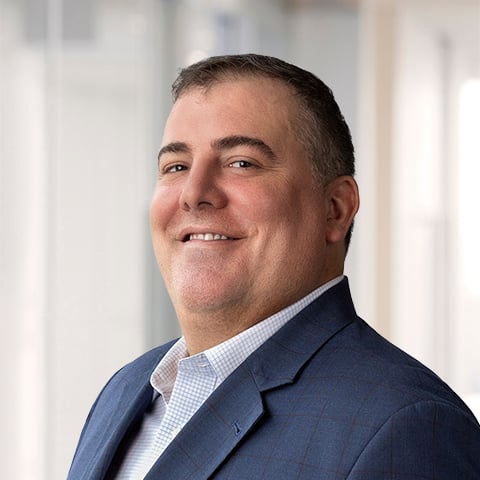Conference Panel: Talking ESG With Uber and Shopify
Firm,Equities
![]()
Technology and sustainability are intersecting more than ever before. At Baird’s 2021 Virtual Global Consumer, Technology & Services Conference, the firm posted a panel titled “Arming the Rebels: Shopify & Uber Discuss Sustainability, Opportunity and ESG,” which featured each company’s perspectives on how creating business opportunity can – and must – align with sustainability goals.
Moderated by Colin Sebastian, Baird’s Senior Research Analyst covering internet and interactive entertainment, and Ben Kallo, Baird’s Senior Research Analyst covering sustainable energy & mobility, the discussion featured Stacy Kauk, Director – Sustainability Fund at Shopify, and Marian Macindoe, Head of ESG Strategy & Engagement at Uber.
Watch the Panel >Panel Highlights
 $450 Billion Flowing Into ESG Funds
$450 Billion Flowing Into ESG Funds
Sebastian opened the panel by pointing to the rapid rise of ESG investing. “As two companies leading digital transformation by providing the means for people around the world to build businesses to work for themselves, and to participate in some of the most important secular growth areas of the economy, including e-commerce, mobility, and logistics, Shopify and Uber I think are perfect to address how to balance sustainability and other elements of ESG while simultaneously navigating super fast growth. For some perspective, I was on a presentation earlier today where the staff has mentioned that another $450 billion have flowed into funds focused on ESG. I believe that's a global number and that represents a double-digit increase year over year. This is really a massive shift relevance, I think, for all investors tuning in.”

100-Year Mission
Much of the discussion focused on Uber's and Shopify’s commitment to creating opportunity for individuals who use their platforms – and how they view the relationship between increasing business opportunity and sustainability goals.
Kauk said Shopify takes a long-term view on that intersection point. “At Shopify, we have a 100-year mission, and that is to make commerce better for everyone. And on top of that, our CEO believes that we need to make sure that the next century is worth reaching. And those lines are in our IPO letter, and in a way, this is our ESG mission. We think about entrepreneurship, and we think about what are those barriers that exist to entrepreneurial opportunities and really what those are. Those fall in those E, S and G buckets. We need to focus on economic impact, we need to focus on entrepreneurial education, we need to focus on computing and technology development. As well as removing friction in terms of diversity and belonging, as well as climate change.
“Climate change is a threat multiplier, it makes things that are tough for folks around the world even tougher. And if we don't put effort behind fighting climate change, people will not be able to focus on building a business. We will lose entrepreneurs because they're focused on food and water and dealing with the destruction of increased severe weather events and things like that. So if we have a 100-year vision, then climate change is actually on the table for something we should be addressing to ensure a long-term business integrity at Shopify.”
 $140 Billion Earned by Drivers on Uber Platform in Past Five Years
$140 Billion Earned by Drivers on Uber Platform in Past Five Years
Macindoe shared Uber’s perspective on creating access to flexible work for workers of all backgrounds. “Uber is a business itself, I mean, it is all about opportunity. We're a technology platform, right? And we use our massive network to connect consumers of services with providers of services. … We're in 71 countries, 10,000 cities. We're one of the largest open platforms for work in the world. In the last five years, drivers on the platform earned over $140 billion. And drivers that use our platform are diverse, the reasons they use Uber's platform are diverse. There's professional drivers, veterans, students, new parents, anyone at all. If you can think of a type of person, that type of person is driving Uber. And about half of drivers in the U.S. drive fewer than 10 hours a week, so you don't have to wait for a job opening or interview for a role. And it's this kind of work, this opportunity, these low barriers to entry and protection from discrimination mean that workers from all backgrounds, regardless of your race, ethnicity, gender, sexual orientation, et cetera, et cetera, have equal access to flexible work.”
Uber is also focused on enhancing its drivers’ well-being and the quality of independent work. “We believe that more can be done and more should be done. And these issues predate COVID, but COVID brought into sharp relief the need for everyone to be able to find quality of rewarding work.”

550 Transit Partnerships Globally
Macindoe spoke about Uber’s evolution in recent years and belief that ESG doesn’t need to oppose or obstruct business goals or growth. “We’re partners with cities on their sustainability objectives. We’re leaders in safety and transparency. We have over 555 transit partnerships around the world. … We're working on to be part of the solution instead of going against cities or against regulators' ESG objectives, we're leading in all of these important issues and making our mark. And on top of that, consumers want this, right? Not only the retail consumers, B2B customers want this, employees want this, investors want this, they want purpose and passion. And that is good for business. And so our initiatives on all these ESG areas is only working to make Uber stronger.
“The baseline for our views is the future of transportation has to be shared. It has to be shared. Cars are woefully underutilized. Car ownership is terribly inefficient. Two, it's got to be electric. We have to get away from fossil fuels. And three, it's going to be multimodal. So a mix of public transportation, sharing economy, micro mobility.”
 15% of U.S. Greenhouse Gas Emissions Caused by Empty Truck Miles
15% of U.S. Greenhouse Gas Emissions Caused by Empty Truck Miles
Speaking about the environmental gain opportunities inherent to e-commerce, Kauk said, “Online shopping tends to have a lot more efficiencies and a less climate impact than everybody getting in their cars and driving around to all the stores that they need to go to. You get those packages delivered to your home. And there are efficiencies from an environmental perspective based on the technologies that are available that conduct the nodal analysis of where those trucks go. … When you're able to design solutions that make your system more efficient, there is often a climate benefit or an environmental benefit as well because you're improving upon the norm that is inherently wasteful.”
Macindoe shared Kauk’s sentiment. “Similarly with our freight where we connect shippers with carriers in our freight platform. Through that, we know that empty truck miles are responsible for 15% of U.S. greenhouse gas emissions. Moreover, for the drivers, it's unpaid miles. We've worked to develop responses to this through batching and bundles so that we can try to make sure that the trucks are empty as little as possible. So far we've bundled more than 29,000 trips and saving CO2 emissions every time we do.”
 90% of People < 30 Seek Brands That Share Their Values
90% of People < 30 Seek Brands That Share Their Values
Kallo asked the panelists for perspective on stakeholders’ desire for ESG. Shopify is seeing growing consumer demand for sustainable brands and products.
Kauk said, “One of the interesting things we found earlier this year when we were conducting some research on the future of commerce, and we were able to uncover that over 55% of folks 50 and above are interested in buying from a brand that aligns with their values. When you go down the demographics and you get to 30 and under, almost 90% of them want to spend their money on a brand that aligns with their values. What we're seeing is customer demand increasing as their earning potential grows up. You're going to have some serious growth happening in consumer demand to be buying from sustainable brands, which means our merchants need to build sustainable businesses as well.”

Convincing Skeptics?
Sebastian asked the panelists how they respond to investors who aren’t convinced ESG is compatible with growth or innovation. Speaking of Shopify’s experience, Kauk said, “That's not something that we hear. When we're out speaking with investors, they care deeply about our initiatives and what we're up to, and they want to understand that connectivity to our mission and what we're doing for entrepreneurs so that we can make commerce better.”
Macindoe chimed in with Uber’s view and an anecdote from earlier in her career. “I don't really hear that either in my current role, but I've definitely heard that before, and what I would say to them is that they're thinking of ESG all wrong. ESG, when done right, is grounded in materiality. … In one of my prior roles, I had a conversation with the CFO of an oil and gas company, and he said, ‘ESG never comes up on earnings calls.’ And how many times have you guys heard that? ‘It doesn't come up on earnings calls.’ But that's asking the wrong question, because do spills come up on earnings calls? Do lawsuits come up on earnings calls? Does regulation come up? That's all ESG, so it's about changing the way you're thinking about these issues. And the companies are changing, and ESG is changing, investors are changing. And I think it's all for the better, but a lot of ESG is about changing your perception of it, and understanding that these issues are actually integrally related to the success of your business.”
Panelists

Stacy Kauk
Director – Sustainability Fund


Marian Macindoe
Head of ESG Strategy & Engagement


